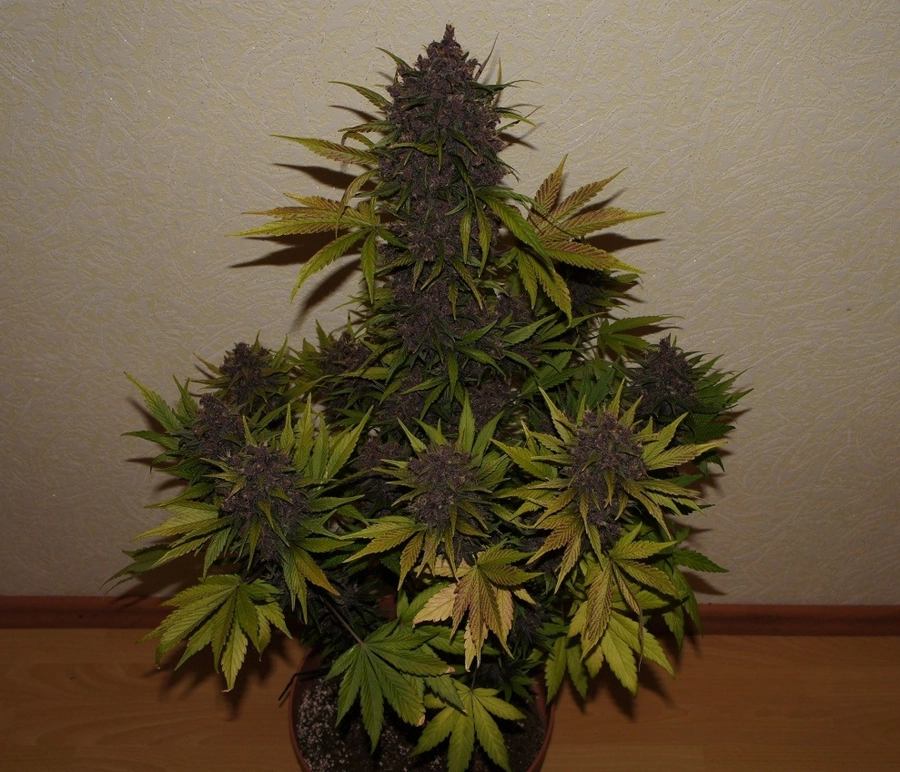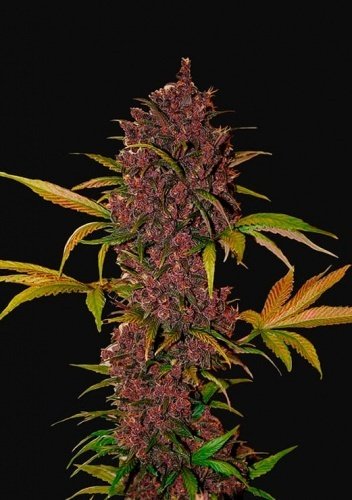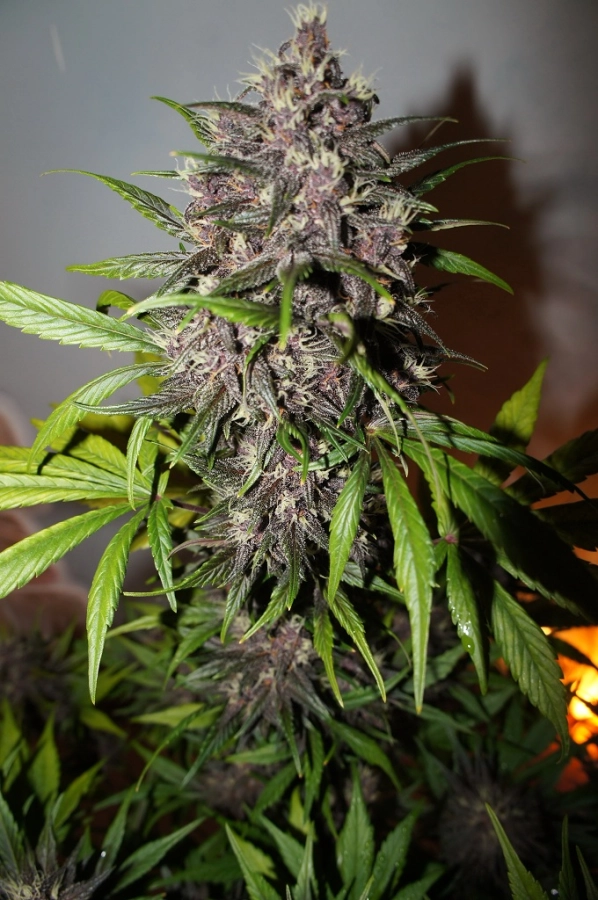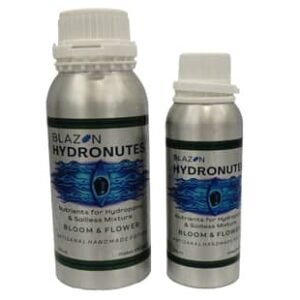Introduction to LSD Autoflower
The LSD Autoflower cannabis strain stands out as a unique and highly-regarded variety among cannabis enthusiasts and growers alike. Originating from the crossbreeding of the potent LSD strain and a robust ruderalis, this autoflowering version inherits the best traits from both parent strains. The original LSD strain, named after the powerful hallucinogenic drug, is renowned for its intense psychedelic effects and was developed by the breeders at Barney’s Farm. By introducing the ruderalis genetics, breeders successfully created a strain that transitions from the vegetative phase to the flowering phase automatically, independent of light cycles, thus simplifying the cultivation process.
What sets LSD Autoflower apart from other strains is its resilience and ease of growth, making it an excellent choice for both novice and experienced growers. It thrives in a variety of environments, including indoor setups, greenhouses, and even outdoor gardens. This adaptability, coupled with a relatively short life cycle of approximately 8-9 weeks from germination to harvest, makes it an attractive option for those seeking a quick yet rewarding cultivation experience.
LSD Autoflower has garnered significant popularity not only for its cultivation benefits but also for its potent effects. Recreational users appreciate its powerful euphoric and cerebral high, which often brings about a sense of creativity and introspection. Medicinally, it is valued for its potential to alleviate stress, anxiety, and chronic pain, providing a multifaceted approach to wellness. The strain’s unique combination of Indica and Sativa characteristics results in a balanced experience, offering both relaxation and mental stimulation.
In summary, the LSD Autoflower cannabis strain is a remarkable blend of ease of growth, resilience, and potent effects. Its origins, genetic makeup, and user-friendly growing attributes contribute to its widespread acclaim and continued popularity in the cannabis community.
Benefits of Growing Autoflowers
Autoflowering strains, such as LSD Autoflower, offer several compelling advantages that distinguish them from traditional photoperiod strains. One of the primary benefits is their shorter growth cycle. Typically, autoflowering plants can transition from seed to harvest in as little as 8-10 weeks. This rapid lifecycle allows cultivators to achieve multiple harvests within a single growing season, significantly increasing overall yield potential.
Ease of cultivation is another notable benefit of growing autoflowers. These strains are inherently less demanding in terms of light requirements. Unlike photoperiod strains that necessitate strict light schedules to trigger flowering, autoflowers automatically enter the flowering phase after a few weeks of vegetative growth, regardless of light exposure. This characteristic simplifies the growing process, making autoflowers an excellent choice for novice growers or those with limited time.
Moreover, autoflowering strains like LSD Autoflower exhibit a robust resilience to environmental stressors. Their genetic lineage, often derived from hardy Ruderalis strains, endows them with the ability to withstand less-than-ideal growing conditions. This resilience makes them suitable for outdoor cultivation in regions with shorter growing seasons or unpredictable weather patterns. Additionally, their compact size and reduced need for extensive training make them ideal for indoor grows, particularly in limited spaces.
When comparing autoflowers to photoperiod strains, the advantages become even more apparent. Photoperiod strains, while potentially offering higher yields, require meticulous care, precise light management, and longer cultivation periods. In contrast, autoflowers provide a more straightforward, less labor-intensive growing experience, with a faster turnaround. This efficiency is particularly beneficial for growers seeking quick results or operating in regions with restrictive climates.
In essence, the benefits of growing autoflowers like LSD Autoflower are multifaceted, encompassing shorter growth cycles, ease of cultivation, and enhanced resilience. These traits collectively contribute to their growing popularity among cannabis cultivators, making them a viable and attractive option for both novice and experienced growers alike.
Ideal Growing Conditions for LSD Autoflower
When cultivating LSD Autoflower cannabis, establishing the optimal growing conditions is crucial for maximizing yield and ensuring robust plant health. Key factors to consider include temperature, humidity, lighting, soil quality, nutrients, and watering schedules. Each of these elements plays a significant role in the growth cycle and overall vitality of the LSD Autoflower strain.
Temperature is a primary concern. LSD Autoflower thrives in a stable environment with temperatures ranging between 21°C to 29°C during the day and slightly cooler temperatures at night. Consistent temperature control helps prevent stress, which can negatively impact growth and bud development.
Humidity levels should be carefully monitored, particularly during different growth stages. During the vegetative phase, maintain humidity between 40% to 60%. This range supports healthy leaf development and overall vigor. As the plant transitions to the flowering stage, reduce humidity to 30% to 40% to minimize the risk of mold and mildew, which can devastate the crop.
Lighting is another critical element. LSD Autoflower plants require substantial light to flourish. A light schedule of 18 hours on and 6 hours off is recommended for optimal growth. Utilizing full-spectrum LED lights can provide the necessary intensity and spectrum for both vegetative and flowering stages, ensuring balanced development.
Soil quality is fundamental to the health of LSD Autoflower cannabis. High-quality, well-aerated soil with good drainage is essential. A mix containing peat moss, perlite, and compost can offer the ideal balance of nutrients and structure. Regularly check the pH level of the soil, aiming for a range between 6.0 and 7.0, to ensure optimal nutrient uptake.
Proper nutrient management is vital for maximizing yield. During the vegetative stage, focus on nitrogen-rich fertilizers to promote leafy growth. As the plant enters the flowering stage, switch to phosphorus and potassium-rich nutrients to support bud formation and density.
Finally, an appropriate watering schedule is key. Overwatering can lead to root rot, while under-watering can stress the plant. Water thoroughly but allow the soil to dry slightly between watering sessions. This balance supports healthy root development and prevents common issues associated with improper watering.
By carefully managing these growing conditions, cultivators can optimize the health and productivity of their LSD Autoflower cannabis plants, leading to a successful and bountiful harvest.
Germination and Seedling Stage
Germinating LSD Autoflower seeds is a crucial initial step in the cultivation process. There are several methods to successfully germinate these seeds, with the most popular being the paper towel method and direct soil sowing. Each method has its own set of advantages and specific steps that need to be followed to ensure successful germination.
The paper towel method is highly regarded for its simplicity and high success rate. To begin, you will need a couple of paper towels, two plates, and your LSD Autoflower seeds. Moisten the paper towels with distilled water, ensuring they are damp but not soaking wet. Place the seeds between the two moistened paper towels and then set them on one of the plates. Cover them with the second plate to create a dark, humid environment. Keep the setup in a warm place, ideally between 21-29°C. Check the seeds daily, ensuring the paper towels remain moist. Generally, within 48-72 hours, the seeds will sprout, and small roots will emerge.
Alternatively, you can sow the seeds directly in the soil. This method requires a high-quality, light, and well-draining soil mix. Plant the LSD Autoflower seeds about a quarter-inch deep in the soil and lightly cover them. Water the soil gently to keep it moist but not waterlogged. Maintain a warm environment, again within the 21-29°C range. Germination in soil typically takes a little longer, around 3-7 days.
Once the seeds have germinated, they enter the seedling stage. During this phase, maintaining optimal conditions is essential for healthy growth. Seedlings need ample light; using a fluorescent light or LED grow light is recommended to provide 18-24 hours of light per day. Keep the light source about 2-3 inches above the seedlings to prevent stretching. The temperature should remain between 21-24°C, and humidity levels should be around 65-70%. Water the seedlings sparingly, ensuring the soil remains moist but not saturated. Proper ventilation is also important to prevent mold and promote healthy stem development.
By carefully managing the germination and seedling stages, you lay a strong foundation for the successful growth of LSD Autoflower cannabis plants. Adhering to these guidelines will help ensure robust and healthy seedlings, setting the stage for a fruitful cultivation journey.
Vegetative Growth and Care
The vegetative stage of LSD Autoflower cannabis growth is a critical period that sets the foundation for a healthy and productive plant. During this phase, the plant focuses on developing its foliage, roots, and overall structure. Ensuring the plant receives the right nutrients, light, and airflow is essential for optimal growth.
Firstly, nutrient management is crucial. LSD Autoflower plants typically require a balanced mix of nitrogen, phosphorus, and potassium, along with essential micronutrients. During the vegetative stage, a higher nitrogen content is preferable as it promotes lush, green foliage. It is recommended to use a high-quality, cannabis-specific nutrient solution and follow the manufacturer’s guidelines to avoid overfeeding or nutrient burn. Monitoring the pH levels of your soil or growing medium can also prevent nutrient lockout and ensure your plant absorbs nutrients efficiently.
Although autoflowering cannabis plants do not rely on light cycles to trigger flowering, providing an adequate amount of light is still vital during the vegetative stage. LSD Autoflowers thrive under 18-24 hours of light per day. Whether using natural sunlight or artificial grow lights, ensure the light source is strong enough to encourage robust growth. LED grow lights are an excellent option as they are energy-efficient and can be adjusted to deliver the optimal light spectrum for cannabis growth.
Proper airflow is another key component for healthy vegetative growth. Good air circulation helps maintain an even temperature and humidity level, which can prevent mold and pest infestations. Utilizing oscillating fans can promote airflow around the plant canopy and prevent stagnant air pockets. Ensure that the growing environment is well-ventilated and monitor humidity levels, aiming for a range of 40-70% during the vegetative stage.
Common issues that may arise during vegetative growth include nutrient deficiencies, pest infestations, and environmental stress. Regularly inspect your plants for signs of yellowing leaves, spots, or pests like spider mites and aphids. Address any issues promptly by adjusting nutrient levels, improving airflow, and using organic pest control methods if necessary.
By paying close attention to nutrient management, light provision, and airflow, you can help ensure that your LSD Autoflower cannabis plants grow strong and healthy during the vegetative stage, setting the stage for a bountiful harvest.
Flowering Stage and Harvesting Tips
The flowering stage is a critical period in the life cycle of LSD Autoflower cannabis plants. Recognizing the signs that your plant has entered this phase is essential for adjusting your care routines to maximize yield and bud quality. Typically, the flowering stage begins around 3 to 4 weeks after germination, marked by the appearance of pistils at the nodes where leaves meet the stem.
During the flowering stage, it is crucial to modify the nutrient regimen to support bud development. Transition from a high-nitrogen vegetative formula to a phosphorus-rich flowering fertilizer. This shift ensures that the plant receives the necessary nutrients to support robust bud formation. Additionally, maintaining optimal environmental conditions—such as a temperature range of 20-25°C and relative humidity levels between 40-50%—is vital for healthy flowering.
Light management also plays a significant role during this stage. Although autoflowering strains like LSD Autoflower do not rely on light cycles to flower, providing 18-20 hours of light per day can enhance bud production. Proper air circulation and ventilation are equally important to prevent mold and mildew, which can compromise bud quality.
Determining the right time to harvest is another critical aspect. Look for visual cues such as the color change in pistils from white to amber and the development of trichomes, which should turn from clear to a milky white or amber hue. Using a magnifying glass or a jeweler’s loupe can aid in closely examining these trichomes. Harvesting at the optimal time ensures the highest potency and desired effects of the LSD Autoflower strain.
To maximize bud quality and yield, consider employing techniques such as low-stress training (LST) to promote even canopy growth and better light penetration. Regularly inspect your plants for pests and diseases, and address any issues promptly to maintain plant health throughout the flowering stage.
Pest and Disease Management
Effective pest and disease management is essential for cultivating healthy LSD Autoflower cannabis plants. Understanding the common threats and how to address them can significantly improve your yield and plant quality. Among the most frequent pests that affect these plants are spider mites, aphids, and whiteflies. These insects feed on the plant’s sap, weakening it and making it more susceptible to diseases. To prevent an infestation, it is crucial to maintain a clean growing environment. Regularly inspecting your plants for early signs of pests can help you take swift action before the problem escalates.
For organic pest control, options such as neem oil or insecticidal soaps can be effective. Neem oil disrupts the life cycle of pests, reducing their population over time. Insecticidal soaps, on the other hand, work by suffocating the pests on contact. Another natural method involves introducing beneficial insects like ladybugs, which prey on harmful pests. For those who prefer chemical solutions, there are various pesticides available specifically designed for cannabis cultivation. However, it is important to use these products cautiously to avoid harming the plants or leaving harmful residues.
Disease management is equally important, with powdery mildew and root rot being two common issues. Powdery mildew appears as a white, powdery substance on leaves and stems and can be treated with fungicides or a mixture of water and baking soda. Root rot, often caused by overwatering, leads to brown, mushy roots and can be prevented by ensuring proper drainage and avoiding excessive watering. If root rot occurs, removing the affected parts and improving soil conditions can help save the plant.
Spotting early signs of trouble is vital for effective pest and disease management. Regularly check the leaves, stems, and soil for any abnormalities. Yellowing leaves, stunted growth, and unusual spots are indicators that something may be wrong. By taking a proactive approach and employing both preventive and corrective measures, you can successfully manage pests and diseases, ensuring the healthy growth of your LSD Autoflower cannabis plants.
Drying, Curing, and Storing Your Harvest
Once your LSD Autoflower cannabis plants have reached maturity and have been harvested, the next critical steps are drying, curing, and storing the buds. Properly executed, these processes will help preserve the potency, flavor, and longevity of your cannabis.
To begin, drying is an essential step that removes excess moisture from the buds. Hang the trimmed branches upside down in a cool, dark environment with good air circulation. The ideal temperature for drying is between 15-21°C with humidity levels around 50-60%. It generally takes about 7-10 days for the buds to dry thoroughly. You’ll know they are ready when the smaller stems snap rather than bend.
After drying, curing is the next crucial phase. This process enhances the flavor and aroma of your LSD Autoflower buds while also stabilizing the cannabinoids. Place the dried buds into airtight glass jars, filling each jar about three-quarters full to allow for some air circulation. Store these jars in a dark, cool place, maintaining a temperature around 21°C. Initially, open the jars once or twice a day for 5-10 minutes to release any excess moisture. This practice, known as “burping,” should be done for the first week. After the first week, reduce the frequency to once every few days for the next two weeks. The overall curing process typically takes about 2-4 weeks, but extending it to 6-8 weeks can further improve quality.
Finally, proper storage is vital to maintaining the quality of your cured buds. Keep the cannabis in airtight containers in a cool, dark place with minimal exposure to light, heat, or air. Optimum storage conditions are a temperature of around 15-21°C and humidity levels between 55-62%. Using humidity packs can help maintain these conditions. Avoid plastic bags and containers, as they can affect the taste and potency of your cannabis. By following these guidelines, you can ensure that your LSD Autoflower buds remain potent and flavorful for an extended period.









Reviews
There are no reviews yet.